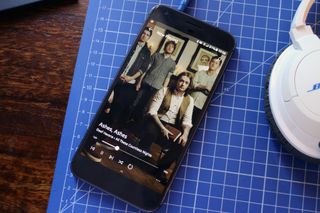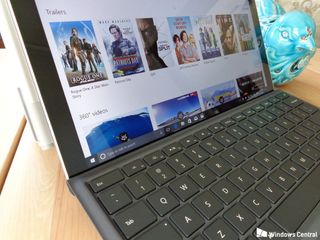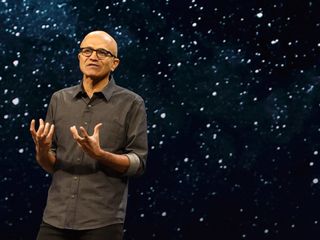Groove Music failed because of Microsoft's smartphone missteps
There are many reasons why Microsoft terminated its Groove music streaming service, but it's the lack of a mobile platform that is the real culprit.

Earlier this week, Microsoft announced that it is terminating the Groove Music Pass streaming service later this year. Going back to Zune (and even further with MSN Music), the move puts the proverbial nail in Microsoft's long-failed attempt to become a preferred service for online music.
While the cost of maintaining a large music catalog is the ultimate reason for the death of the service, it was the failure of Microsoft's phone division that was the main catalyst.
Music is mobile
Spotify is the world's leading music streaming service, and its demographics reveal quite a bit. The most prominent proponents of Spotify are millennials with a massive skew towards a younger audience. The single most significant use case for streaming music is on smartphones, while in the car, going for a run, or while traveling. Both of those data points are problems for Microsoft.

Another failure for Microsoft is its inability to launch and maintain a successful smartphone platform despite numerous attempts. This youth-focused, mobile-orientated music world is very different from the Napster and WinAmp days back when digital music was still primarily consumed on the PC.
Assuming, however, for a moment that the company back in 2010 did have a winning formula for smartphones, things would be very different today. Even if Microsoft only had 20 percent or 30 percent of the smartphone market, that equals millions of Groove Music users just by it being the default service – no different than how Apple has iTunes or Google uses Google Music.
Sure, Microsoft eventually put Groove on iOS and Android, but the competition was too stiff and the move too late. Users are more likely to default to iTunes, Spotify, or even Amazon's growing music business over Groove.
Once Microsoft ended its phone ambitions, that move effectively ended Groove Music as a service. While Groove lives on as a PC and Xbox music player, the percentage of users, who will – for hours on end – listen to and engage with Groove would be minimal without a mobile strategy.
Get the Windows Central Newsletter
All the latest news, reviews, and guides for Windows and Xbox diehards.

None of this is conjecture, either, because numerous people familiar with the decision to end Groove Music Streaming – and sales of music in the Windows Store – told us that it was the lack of a mobile platform that created the situation.
Groove didn't innovate fast enough
Microsoft is too often a company that creates a product that never catches fire. Meanwhile, its competition comes along, outpaces and out markets it, resulting in the demise of the category.
There is an embarrassing litany of Microsoft's failures to succeed in the consumer space. For instance, smart watches (Spot and Band), tablets (Windows RT), motion (Kinect), smartphones (Windows Phone and Windows Mobile), smart tags (Tag), and now music (Zune, Nokia Music, Xbox Music and Groove).
Microsoft seems almost cursed by its failures, yet it still has Windows – the most dominant PC OS on the planet.

What bothers people about Groove the most is that it was good. Starting in 2016, the rapid innovation around Groove and its Universal Windows Platform (UWP) app were satisfying. The Groove team seemed to be firing on all cylinders, adding new features, improving performance and leading in app design.
Naysayers will correctly point out, however, that all Microsoft was really trying to do was recreate what it had already done with Zune Music back in 2010.
Indeed, this constant rebooting and restarting of Microsoft's music ambitions eerily match the trajectory of Windows phone and mobile over the last decade. And like smartphones, the continuous restarts meant that what was eventually Groove Music never had the stability to mature and grow.
This punctuated development cycle let companies like Spotify walk in and with a focused mission own the market. Spotify did not have to reboot its platform numerous times or even once. Things like a family pass – a seemingly essential and obvious feature – never materialized for Groove, despite the high profile requests from its users.
In the end, the failure of Groove falls 100 percent on Microsoft, which blew many key moments The most severe one, however, is its smartphone fiasco, something it still has not solved.
Movies & TV is safe ... for now
Perhaps the most damaging aspect of the end of Groove and Microsoft's music service is the impact on its other services. Since the Groove news broke, users have been flummoxed and worried that the other shoe would soon drop, and the company will announce that the Movies & TV service is ending too.
After all, if the company is ending sales of music, why not just end movies and rentals too? Netflix, Hulu, and Amazon are all big players in the market and Microsoft is not. And yet, Microsoft has been at it a long time.

Here, however, things are different. Microsoft has Xbox, and between the Xbox 360 and now three tiers of the Xbox One, it has a viable presence in the number one spot where people watch movies: the living room.
While some people watch TV shows and rent films on their phones, the majority do not. The family TV is still king.
In talking with some people at Microsoft, I was told that Movies & TV does quite well, and the dynamics of maintaining that catalog (versus the one for music) are vastly different. Of course, it would seem even smarter if Microsoft Movies & TV was also on Roku, Apple TV, or even Amazon Fire TV, but reasons for that situation are not as evident.
Microsoft has a long battle to fight to convince consumers that it is committed to its services. While OneDrive, Cortana, Movies & TV, and even Xbox seem like safe bets, this new Microsoft appears to be very fond of hitting refresh.
There is a point where too much renewal can be a dreadful thing, reflecting instability and chaos, not leadership. No one wants to support a company that at the first sign of stiff competition cowers in the corner and throws in the towel, even when it had an initial advantage.

Consumers are OK with adopting a new product, but what they value the most are consistency and commitment. Microsoft needs to try much harder on both fronts if it ever wants to be taken seriously in the consumer market.
Finally, I hear this Spotify-Microsoft partnership goes much further than we have been told. The idea that engineers on the Groove team focused on music and streaming may now be working on a proper Spotify UWP app – maybe even with OneDrive support – does not seem farfetched. We'll have to see if that pans out over the next few months.

Daniel Rubino is the Editor-in-chief of Windows Central. He is also the head reviewer, podcast co-host, and analyst. He has been covering Microsoft since 2007, when this site was called WMExperts (and later Windows Phone Central). His interests include Windows, laptops, next-gen computing, and watches. He has been reviewing laptops since 2015 and is particularly fond of 2-in-1 convertibles, ARM processors, new form factors, and thin-and-light PCs. Before all this tech stuff, he worked on a Ph.D. in linguistics, watched people sleep (for medical purposes!), and ran the projectors at movie theaters because it was fun.
